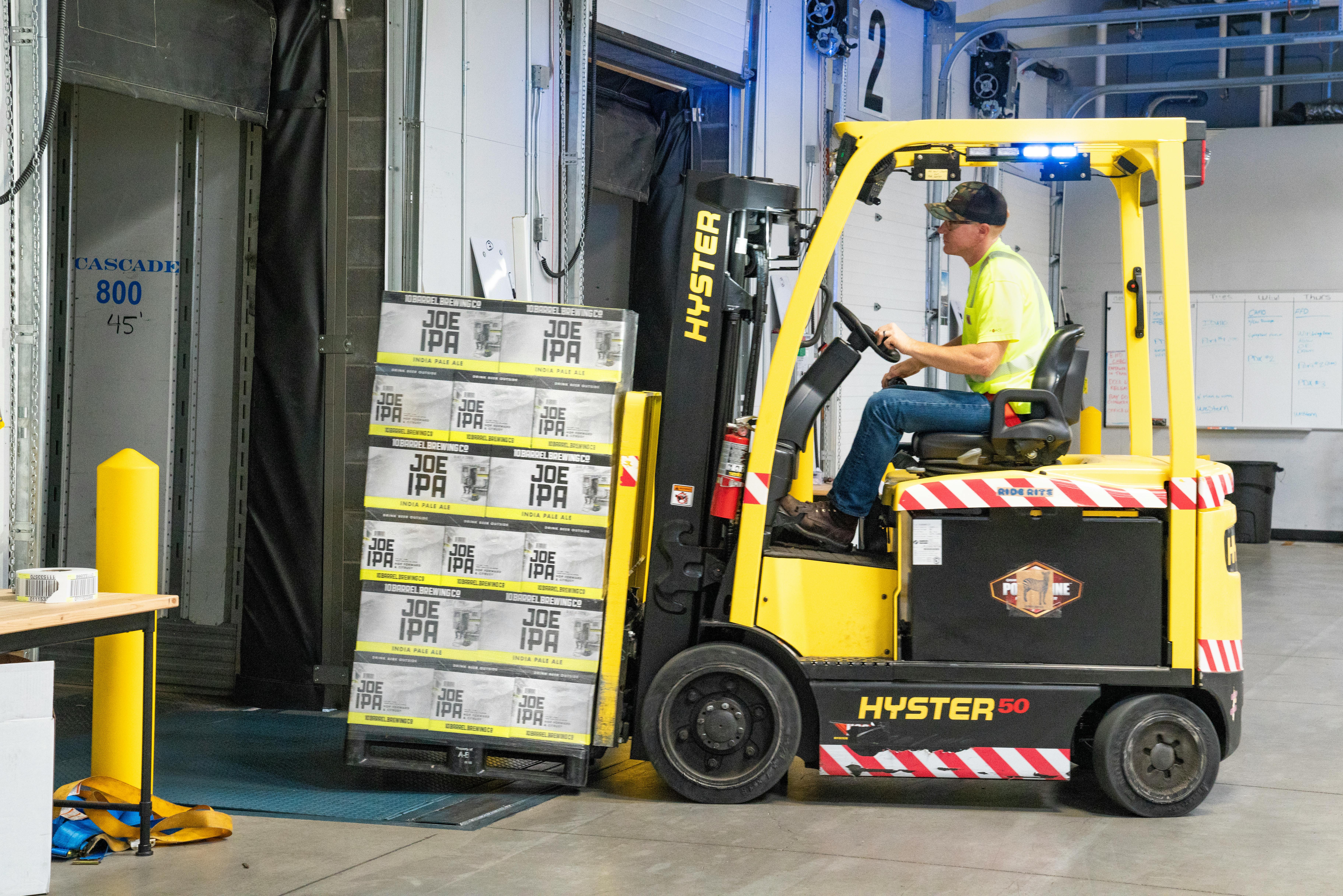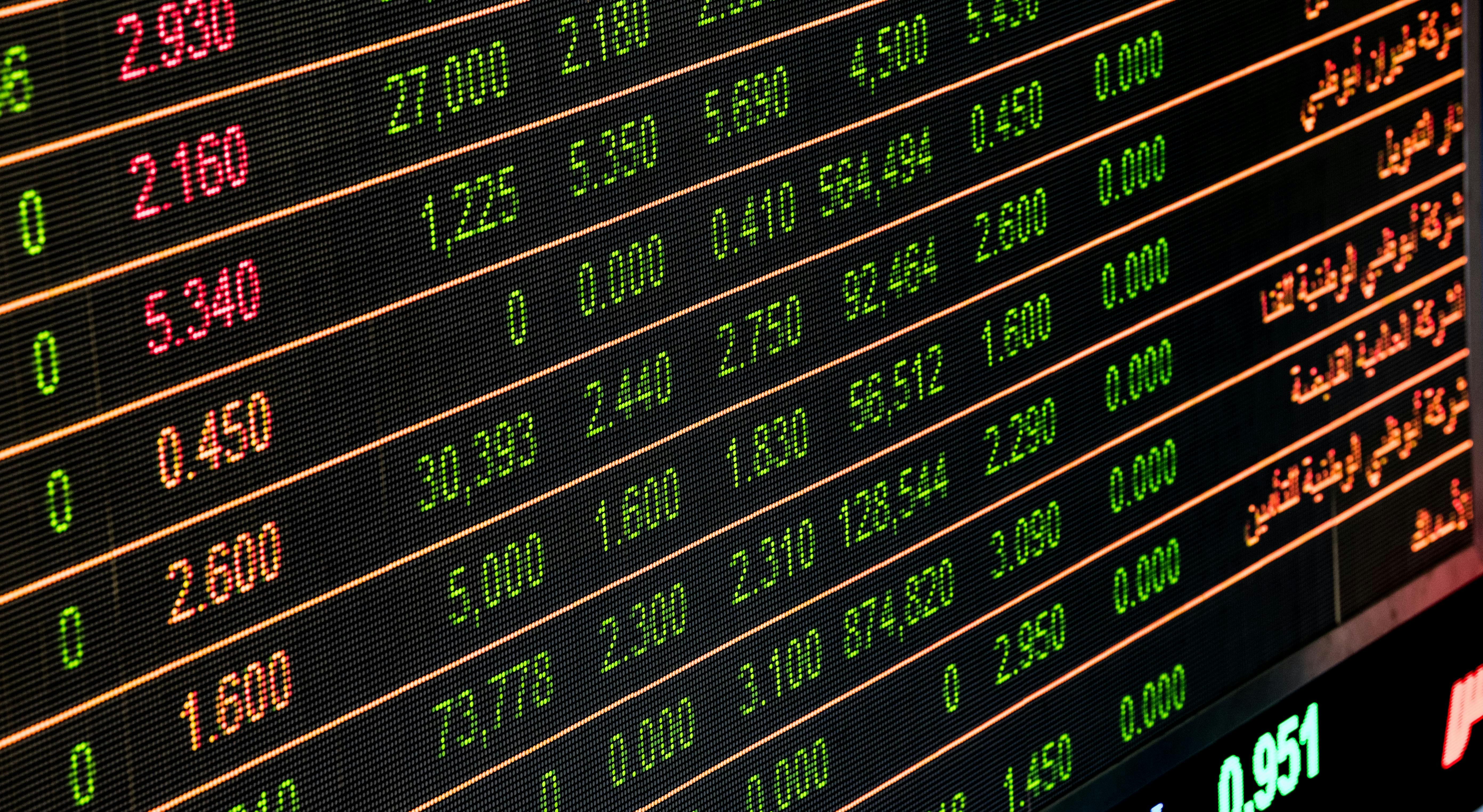
What is Convenience Yield? Why Storing Commodities Matters
Learn about convenience yield—the hidden value of holding physical commodities. Understand how it affects futures prices, backwardation, and commodity investment returns.
Why would anyone pay more for oil today than they would for oil delivered in six months? Why do manufacturers sometimes keep expensive inventory on hand when they could simply buy futures contracts? The answer lies in a concept that explains one of the most fundamental forces in commodity markets: convenience yield.
Convenience yield represents the benefit of physically holding a commodity versus owning a promise to receive that commodity in the future. It's the invisible premium that emerges when having something now, in your warehouse, ready to use, is worth more than waiting for future delivery. Understanding convenience yield unlocks the mystery of why futures curves take different shapes and how physical commodity holders make inventory decisions.
Convenience Yield at a Glance
High Convenience Yield
Backwardation
Value immediate possession
Low Convenience Yield
Contango
Future delivery acceptable
Example: Refinery needs crude NOW to keep running = High convenience yield
What is Convenience Yield?
Convenience yield is the non-monetary benefit or premium associated with holding the physical commodity rather than a derivative contract like a futures contract. It's the value of having immediate access to the commodity—the convenience of possession.
Think of convenience yield as answering this question: "What's it worth to me to have this commodity sitting in my warehouse right now, ready to use, rather than having a contract promising delivery next month?"
The Concept Explained Through Examples
Example 1: The Oil Refinery
An oil refinery needs crude oil continuously to keep operating. If the refinery runs out of crude, it must shut down—losing revenue, keeping workers idle, and potentially disappointing customers. Having crude oil in storage tanks means:
- Continuous operations without interruption
- Ability to respond to unexpected demand spikes
- No dependence on just-in-time delivery
- Buffer against supply disruptions
This operational security has value—convenience yield. The refinery might prefer paying $90 for oil today versus $88 for futures delivery in three months, because having oil now is worth more than $2 per barrel to them.
Example 2: The Grain Elevator
A grain elevator serving farmers needs physical corn inventory to make immediate purchases when farmers bring harvest. Without inventory capacity, the elevator loses business to competitors. Physical corn in bins means:
- Ability to buy from farmers immediately
- Flexibility to fill customer orders on demand
- Reputation as a reliable buyer
- Operational continuity
The elevator might accept slightly lower margins on physical corn versus just trading futures because the physical commodity enables their entire business model.
The Economics of Convenience Yield
The Relationship with Storage Costs
Convenience yield exists in tension with storage costs. The fundamental pricing relationship for commodity futures is:
Futures Price = Spot Price + Storage Costs + Financing Costs - Convenience Yield
Storage and financing costs push futures above spot (creating contango). Convenience yield pulls futures below spot (creating backwardation). The market outcome depends on which force dominates.
When Storage Costs Dominate (Low Convenience Yield):
- Ample inventory exists
- Supply exceeds immediate demand
- Little urgency for immediate possession
- Result: Contango (futures > spot)
- Market message: "We have plenty now; waiting costs money"
When Convenience Yield Dominates (High Convenience Yield):
- Inventories are low or tight
- Strong immediate demand for physical commodity
- High value placed on immediate possession
- Result: Backwardation (spot > futures)
- Market message: "We need supply NOW; can't wait for future delivery"
How Convenience Yield Changes
Convenience yield isn't static—it fluctuates based on market conditions:
Factors That Increase Convenience Yield:
- Inventory drawdowns: As stockpiles decline, the value of having physical commodity increases
- Supply disruptions: When supply chains are disrupted, immediate possession becomes more valuable
- Strong demand: When production or consumption accelerates, having commodity ready to use gains value
- Seasonal demand peaks: During high-demand seasons (winter for heating oil), immediate availability commands premiums
- Production inflexibility: When you can't easily adjust operations, having inventory buffer is crucial
Factors That Decrease Convenience Yield:
- Abundant inventories: When stockpiles are high, immediate possession has less value
- Weak demand: When consumption is slow, you don't need commodity immediately
- Reliable supply chains: When delivery is predictable, owning physical inventory is less critical
- High storage costs: When holding inventory is expensive, the cost outweighs convenience benefits
Convenience Yield and Market Structure
How Convenience Yield Creates Backwardation
When convenience yield exceeds storage costs, backwardation emerges. The market is telling us that immediate physical possession is so valuable it outweighs all the costs of carrying inventory.
Example:
- Storage + financing costs: $2 per barrel
- Convenience yield: $5 per barrel
- Net effect: -$3 (futures should be $3 below spot)
- If spot = $90, futures = $87
The $3 backwardation reflects the net $5 convenience yield minus $2 carrying costs. Market participants value having oil now at a $5 premium, even after accounting for $2 of storage costs.
How Low Convenience Yield Creates Contango
When convenience yield is minimal, storage costs dominate, creating contango. The market is signaling that immediate possession has little extra value—you might as well wait for future delivery and avoid storage costs.
Example:
- Storage + financing costs: $3 per unit
- Convenience yield: $0.50 per unit
- Net effect: +$2.50 (futures should be $2.50 above spot)
- If spot = $2,000, futures = $2,002.50
The $2.50 contango reflects $3 in carrying costs minus minimal $0.50 convenience yield. With abundant supply and weak immediate demand, owning physical commodity offers little benefit beyond financial exposure.
Why Convenience Yield Matters for Different Market Participants
For Commodity Producers
Inventory Management Decisions:
Producers evaluate whether to sell production immediately or store it:
- High convenience yield (backwardation): Spot prices exceed futures, incentivizing immediate sales. Storage doesn't make economic sense when spot commands premiums.
- Low convenience yield (contango): Futures prices exceed spot, incentivizing storage. If contango spread exceeds storage costs, producers profit by storing and selling futures.
Example: Oil Producer Decision
- Spot crude: $85/barrel
- 6-month futures: $89/barrel
- Storage + financing: $2/barrel for 6 months
- Decision: Store oil and sell futures, locking in $89 - $2 = $87 net vs $85 spot
Low convenience yield (contango exceeding storage costs) makes storage profitable.
For Commercial Consumers
Inventory vs Just-in-Time Strategies:
Manufacturers and processors decide how much physical inventory to maintain:
- High convenience yield environment: Justifies maintaining larger inventories despite storage costs. The insurance value of having supply on hand outweighs costs.
- Low convenience yield environment: Favors just-in-time delivery and minimal inventory. When supply is reliable and abundant, holding expensive inventory doesn't make sense.
Example: Manufacturing Plant
During supply chain disruptions (high convenience yield), manufacturers increase inventory buffers—even at higher costs—because production interruptions cost far more than extra storage expenses. The convenience yield of avoiding shutdowns justifies the inventory investment.
For Traders and Speculators
Identifying Market Conditions:
Convenience yield signals underlying supply-demand fundamentals:
- Rising convenience yield (increasing backwardation): Supply tightening or demand strengthening—potentially bullish signal
- Falling convenience yield (increasing contango): Supply becoming more abundant or demand weakening—potentially bearish signal
Traders use convenience yield changes to confirm or challenge their market views. Increasing convenience yield validates bullish supply-tightness scenarios. Decreasing convenience yield might warn that apparent supply tightness is resolving.
For ETF and Fund Investors
Understanding Roll Yield:
Convenience yield directly impacts commodity ETF returns through roll yield:
- High convenience yield (backwardation): Positive roll yield enhances returns as contracts converge upward to spot
- Low convenience yield (contango): Negative roll yield destroys returns as ETFs sell low and buy high when rolling
Investors who understand convenience yield can time commodity investments to favor backwardation periods when convenience yield supports positive roll yield.
Real-World Examples of Convenience Yield
Example 1: Crude Oil During 2021-2022 Recovery
Situation: Post-COVID demand recovery while OPEC maintained production cuts
Market conditions:
- Global oil inventories declining rapidly
- Refineries running at high utilization rates
- Limited spare production capacity
- Supply chain concerns about future availability
Result: Extremely high convenience yield created steep backwardation— front-month crude traded $10-15 above 12-month futures. Refineries valued immediate oil possession so highly they paid massive premiums over future delivery.
Lesson: When inventory buffers thin and production runs hot, convenience yield skyrockets as participants desperately need physical commodity to maintain operations.
Example 2: Natural Gas Storage Glut (2020)
Situation: Mild winter left natural gas storage at record highs
Market conditions:
- Storage facilities nearly full
- Low heating demand expected to continue
- Production continuing at high levels
- Storage costs increasing as capacity fills
Result: Near-zero (or negative) convenience yield created steep contango. Nobody valued immediate possession—ample supply meant futures were cheaper options than holding expensive physical inventory. Some locations saw negative spot prices as producers paid to avoid storage costs.
Lesson: When inventories are abundant and storage is constrained, convenience yield collapses, creating steep contango as storage costs dominate.
Example 3: Agricultural Commodities Pre-Harvest
Situation: Old-crop grain supplies dwindling as harvest approaches
Market conditions:
- Remaining old-crop inventory in farmer hands or elevators
- Feed mills, processors need continuous supply
- New-crop harvest expected to be normal
- Gap between old-crop exhaustion and new-crop availability
Result: High convenience yield for remaining old-crop creates backwardation between old-crop and new-crop contracts. End users pay premiums for immediate old-crop supply rather than waiting weeks for harvest.
Lesson: Seasonal inventory transitions create temporary high convenience yield periods as remaining supplies gain scarcity value.
Example 4: Gold's Consistent Low Convenience Yield
Situation: Gold markets typically trade in mild contango
Why low convenience yield:
- Gold is primarily a financial asset, not consumed in production
- No industrial urgency for immediate possession
- Large global stockpiles (decades of production stored)
- Reliable delivery mechanisms and deep markets
Result: Gold's convenience yield is minimal—typically near zero. Storage and financing costs dominate, creating predictable mild contango. Spot gold at $2,000 might see 12-month futures at $2,030-2,040, reflecting storage and interest costs with minimal convenience yield offset.
Lesson: Commodities that serve primarily as stores of value rather than production inputs show consistently low convenience yield.
How to Assess Convenience Yield in Markets
Step 1: Observe the Futures Curve
The shape of the futures curve reveals convenience yield:
- Backwardation (downward-sloping): High convenience yield exceeding storage costs
- Contango (upward-sloping): Low convenience yield; storage costs dominate
- Steep backwardation: Very high convenience yield—supply stress signals
- Steep contango: Near-zero convenience yield—abundant supply signals
Step 2: Monitor Inventory Levels
Convenience yield inversely correlates with inventory levels:
- Low inventories: High convenience yield (little buffer, high value to possession)
- High inventories: Low convenience yield (ample buffer, low urgency)
Track published inventory reports (EIA for energy, USDA for agriculture, exchange warehouse stocks for metals) to gauge convenience yield trends.
Step 3: Assess Demand Conditions
Strong demand increases convenience yield:
- High capacity utilization in consuming industries
- Supply chain stress or disruptions
- Seasonal demand peaks
- Geographic supply constraints
Step 4: Calculate Implied Convenience Yield
You can calculate implied convenience yield from market prices:
Convenience Yield = (Spot Price + Storage Costs + Financing Costs) - Futures Price
Example:
- Spot: $90
- 6-month futures: $88
- 6-month storage + financing: $3
- Implied convenience yield: ($90 + $3) - $88 = $5
The market is pricing $5 of convenience yield into the spot-futures relationship.
Common Misconceptions About Convenience Yield
Misconception 1: "Convenience Yield Is a Cash Flow"
Reality: Convenience yield is not a direct cash payment—it's an implicit benefit reflected in relative pricing. You don't receive a check for convenience yield; rather, it's the value embedded in spot premiums or avoided costs from having inventory.
Misconception 2: "Only Physical Holders Benefit from Convenience Yield"
Reality: While physical holders directly enjoy convenience benefits, all market participants are affected by convenience yield through its impact on prices and term structure. Even pure financial traders must understand convenience yield to interpret market signals.
Misconception 3: "Convenience Yield Is Constant for a Commodity"
Reality: Convenience yield fluctuates dramatically based on inventory levels, demand conditions, and supply chain reliability. What has low convenience yield today might have high convenience yield next month if conditions change.
Misconception 4: "High Convenience Yield Means Prices Will Rise"
Reality: High convenience yield indicates current supply tightness, but doesn't guarantee future price increases. If supply improves or demand weakens, prices might fall even while convenience yield remains elevated for a period.
Key Takeaways
- Convenience yield is the benefit of holding physical commodity versus owning a futures contract
- High convenience yield creates backwardation when it exceeds storage costs
- Low convenience yield creates contango as storage costs dominate
- Convenience yield inversely correlates with inventory levels: low stocks mean high convenience yield
- Operational necessity drives convenience yield: refineries, manufacturers, and processors value immediate supply
- Convenience yield fluctuates based on market conditions: demand strength, supply reliability, seasonal patterns
- Understanding convenience yield improves hedging decisions for producers and consumers
- Convenience yield directly impacts roll yield in commodity ETFs and long-term returns
- Different commodities have different typical convenience yields: consumed commodities higher than financial commodities
- Monitoring convenience yield reveals fundamental supply-demand shiftsbefore they fully manifest in prices
Related Topics on SpotMarketCap
Conclusion
Convenience yield might seem like an abstract economic concept, but it's actually one of the most tangible forces in commodity markets. Every refinery manager who keeps extra crude in storage "just in case," every manufacturer who maintains inventory buffers despite the cost, every farmer who holds grain past harvest expecting better basis—they're all responding to convenience yield, even if they don't use that term.
The beauty of convenience yield is that it makes visible something we all intuitively understand: having something now is often worth more than having a promise to receive it later. You can't run a refinery on a futures contract. You can't feed cattle with grain delivery scheduled for next month. You can't manufacture products with a commodity you'll receive eventually. Physical possession has value—convenience yield quantifies that value.
For market participants, understanding convenience yield transforms how you interpret market structure. Backwardation isn't just an arbitrary price relationship—it's the market screaming that people need commodity NOW, valuing immediate possession so highly they'll pay premiums over future delivery. Contango isn't random—it reflects a market where convenience yield is low, supply is ample, and waiting costs less than owning.
As global supply chains grow more complex and inventory management becomes more sophisticated, convenience yield remains a fundamental driver of commodity pricing. Market participants who understand it—who can read the signals it sends through futures curves, who can anticipate when it will rise or fall—have a significant advantage over those who simply watch prices without understanding the forces behind them.
The next time you see a commodity market in steep backwardation, ask yourself: What's driving such high convenience yield? Are inventories critically low? Is demand exceptionally strong? Are supply chains stressed? The answers to these questions, revealed through convenience yield, tell you far more about market fundamentals than any price chart can show on its own.
Track Real-Time Asset Prices
Get instant access to live cryptocurrency, stock, ETF, and commodity prices. All assets in one powerful dashboard.
Related Articles

What is Normal Backwardation? Keynes' Theory Explained
Discover John Maynard Keynes' theory of normal backwardation and how risk premiums compensate speculators in commodity futures markets. Essential economics explained.

What is Basis in Commodity Trading? Spot-Futures Relationship Explained
Master the concept of basis in commodity trading—the critical difference between spot and futures prices. Essential knowledge for hedgers, traders, and investors.

What is Physical Settlement vs Cash Settlement in Commodities?
Understand physical delivery versus cash settlement in futures contracts. Learn how settlement methods affect traders, hedgers, and commodity market participants.